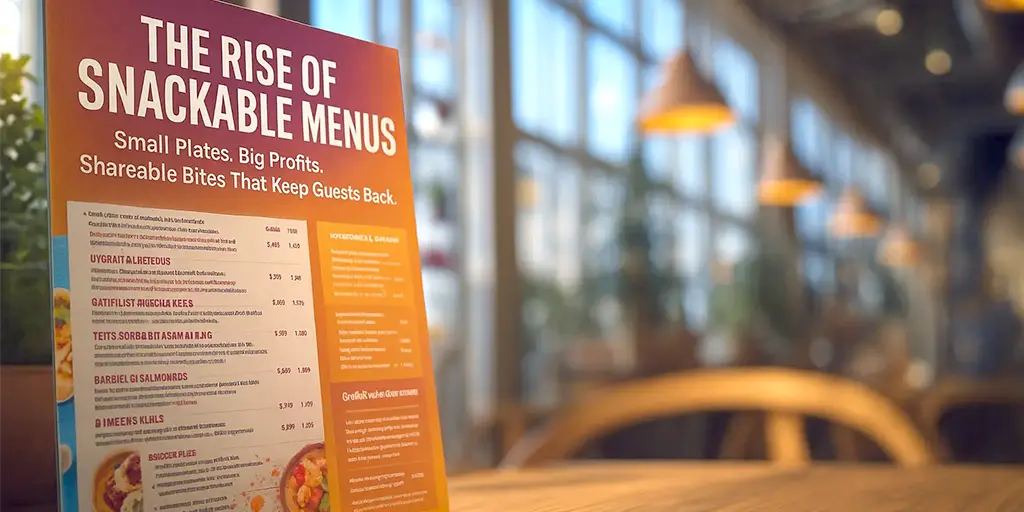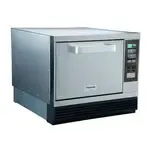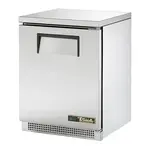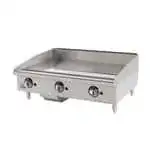
The Rise of Snackable Menus: How Small Portions Are Driving Big Sales
In today’s fast-paced, flavor-obsessed dining culture, small plates are making a big impact. What started as a niche concept has become one of the most effective ways for restaurants to boost sales, delight guests, and optimize kitchen efficiency. The small plate trend—also called snackable menus or shareable appetizers—is no longer reserved for tapas bars or fine-dining tasting menus. It's reshaping how we eat, socialize, and spend.
Let’s explore why small portions are driving big profits, what types of dishes are most successful, and how operators can build a smart snackable strategy—with the right equipment to back it up.
Why Diners Crave Small Plates
One of the driving forces behind small plates is today’s shift in how people dine. Modern consumers—especially Millennials and Gen Z—are looking for more casual, social, and customizable eating experiences.
Key consumer motivations:
- Exploration over commitment: Guests enjoy trying multiple dishes rather than settling on one large entrée.
- Health and portion control: Smaller servings support wellness goals and reduce food waste.
- Social dining: Shareable formats create a more engaging experience, especially for groups.
- Budget flexibility: Diners can control how much they spend by choosing 1–2 items instead of a full meal.
Whether they’re grabbing a drink with friends or just want a quick bite between errands, snackable items meet guests where they are—without overwhelming them.
The Business Case for Snackable Menus
For restaurant operators, snackable menus aren’t just trendy—they’re strategic. These small portion dishes offer high ROI, drive traffic during off-peak hours, and encourage more beverage sales.
How small plates drive profits:
- Higher average check: Diners often order multiple items to share or sample, increasing total spend.
- Reduced food cost: Smaller portions mean less product on the plate, which improves margins.
- Increased table turns: Faster service and bite-sized options keep tables moving.
- Daypart flexibility: Snack menus perform well across happy hours, late nights, and even brunch.
A customer might hesitate to order a $20 entrée—but easily justify two $9 snacks and a $10 cocktail.
What Makes a Menu Snackable?
Not every dish works as a small plate. The most successful snackable items are flavorful, compact, and easy to serve. Think bite-sized, hand-held, and highly craveable.
Popular categories:
- Sliders – mini burgers, pulled pork, chicken with spicy aioli
- Skewers – beef satay, yakitori, grilled shrimp
- Dips and spreads – hummus trio, queso fundido, muhammara
- Tacos and tostadas – 3-bite servings, often with global twists
- Fried snacks – arancini, croquettes, tempura vegetables
- Mini desserts – doughnut holes, pudding jars, bite-sized cakes
Pro tip: Use sauces, garnishes, and spice blends to elevate simple components without increasing costs.
Menu Engineering for Maximum Impact
If you want your small plate menu to succeed, strategic menu design is key. Focus on items that are:
- Quick to prepare
- Visually appealing (high Instagram potential)
- Cross-utilize ingredients from your core menu
- Easy to batch prep during slow hours
Bundle options can also increase sales:
- “Choose any 3 for $18”
- “Snack flight for two”
- “Mini plates + paired cocktails” combos
By making the experience interactive and fun, you not only drive repeat visits—you encourage impulse ordering.
The Equipment Behind a Snackable Kitchen
Executing a snackable menu successfully requires the right tools to maintain speed, quality, and consistency—especially during high-volume hours. Here’s how commercial kitchen equipment plays a vital role:
Must-have tools for small plates:
- Countertop fryers: Perfect for small-batch fried items like arancini, wings, and churros.
- Griddles and flattops: Ideal for searing sliders, quesadillas, or toasted breads.
- Speed ovens or rapid cook ovens: Deliver hot, crispy results in seconds—perfect for reheating small portions without drying them out.
- Prep stations with drop-in cold wells: Keep sauces, toppings, and garnishes organized and chilled.
- Undercounter refrigeration and warming drawers: Ensure fast access to small-batch ingredients during service.
Small plates move fast—so should your kitchen. Investing in the right commercial equipment ensures your team can execute with consistency, even during a rush.
Snackable Menus and Beverage Sales Go Hand-in-Hand
One of the biggest upsides of snackable dining is how well it complements your bar program. Small plates naturally encourage guests to stay longer and order more drinks—whether it’s a wine pairing flight, a seasonal cocktail, or a local beer.
Popular pairings:
- Spicy tacos + margaritas
- Fried appetizers + IPA flights
- Sliders + red wine by the glass
- Skewers + house sangria or sake
Consider a “snack and sip” happy hour pairing to promote both food and beverage margins together.
Marketing Snackable Menus
Snackable dishes are inherently visual and shareable—making them perfect for digital marketing. Use these strategies to drive traffic:
Social media tactics:
- Feature rotating snacks on Instagram stories or Reels
- Promote happy hour snack pairings with dynamic images
- Highlight behind-the-scenes prep to showcase your kitchen's creativity
Menu tactics:
- Label snackable items clearly on printed and digital menus
- Offer snackable add-ons (e.g., “Make it a combo”)
- Introduce limited-time flavors or global snack features
Tip: Use language that sells—words like crispy, spicy, creamy, bold, tangy perform well in snack descriptions.
Global Inspiration Fuels the Snack Trend
Many of the most successful snack menu ideas draw inspiration from around the world. Global street food, in particular, is naturally portioned and built for sharing.
Globally inspired snack ideas:
- Korean fried chicken bites
- Middle Eastern falafel sliders
- Mexican esquites (street corn in a cup)
- Japanese gyoza or karaage
- Indian samosas with chutney
A snackable menu gives you the freedom to introduce bold, creative flavors without needing to redesign your entire menu.
Tips for Getting Started
Launching or refreshing a snackable menu doesn’t require a full rebrand. Start small, test and iterate.
- Begin with 3–5 well-executed items
- Offer them as a special during off-peak times (e.g., happy hour, late-night)
- Track which items sell best and adjust based on guest feedback
- Train staff to promote and describe the items enthusiastically
Above all, make the experience feel fun, casual, and flexible.
Final Thoughts
In a time when diners are seeking flexibility, variety, and value, snackable menus offer a win-win for both guests and restaurants. They meet the moment by providing flavor-forward, shareable experiences that drive incremental revenue—especially when paired with drinks and smart upselling.
Backed by the right commercial kitchen equipment, thoughtful prep, and eye-catching presentation, small plates can become one of your most profitable menu categories. So whether you're a bar, cafe, or full-service restaurant, it may be time to start thinking small—and selling big.



